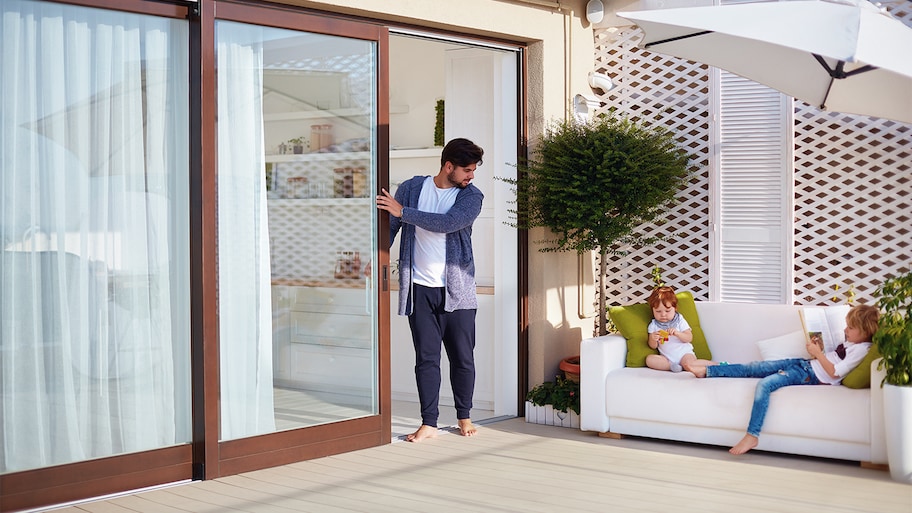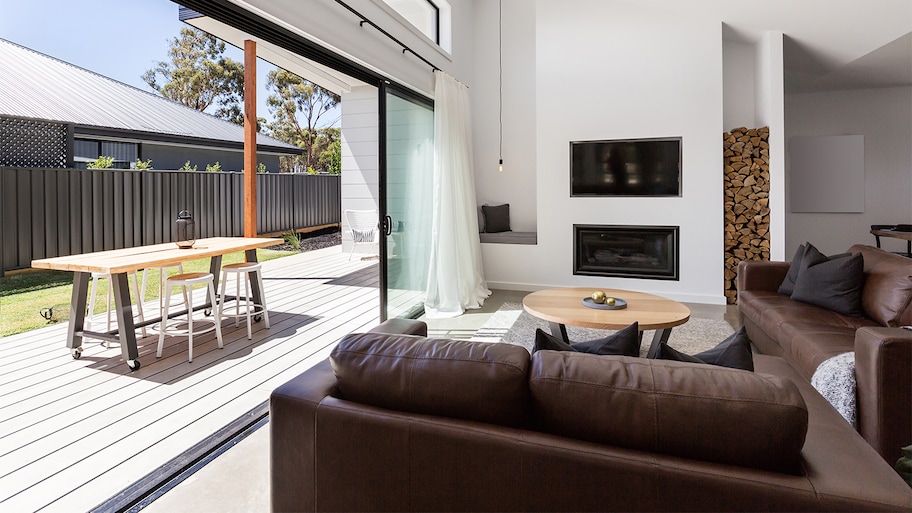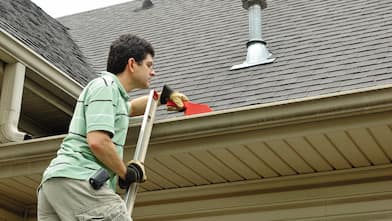Highlights
Leaks often stem from the door track but can come from several locations
A dirty or broken track can break the seal between the frame and the door
Check your rollers, flashing, and weep holes for repairs
Your glass can become unsealed over time
Call in the professionals for water cleanup and damage control
Sliding doors have the notorious habit of coming off their tracks, building up grit, or even becoming unsealed over time. Combine these issues with a pelting rainstorm, and you have a recipe for a flooded patio door track, small water leaks around the frame, and—in the worst-case scenario—water damage in your home.
Try not to fret—sliding patio doors may be finicky, but there’s often an easy fix if you find water leaking under yours. Learn how to identify the common issues, what to do about them, and who to call for a professional fix.
Pinpoint the Leak
Let's say you come home from a long day of work and there's a pool of water just inside your sliding door. You're not sure where it came from either—was it a leaky window? The track of the door? Or was it even around the top frame?
If it’s not currently raining and you want to stop further leaks in the future, break out the garden hose. Lightly spray the outside of your door and observe where the water breaks through to the inside. If a light mist doesn't do it, add some water to the track. The bottom track is the most common culprit, but it's important to rule out other areas first.
6 Common Reasons You Have Water Leaking Under Your Patio Door

Whether the hose trick yielded results or not, you can also go spot by spot to check if these common issues are to blame for water leaking under your patio door. We all know that minimizing water damage in your home is the goal at all costs to avoid mold, pests, and structural issues, so a little detective work goes a long way.
1. The Track Is Dirty
Dirty shoes, muddy paws, and gusts of wind all carry grit, dirt, stones, and everything in between into the tracks of our door. These small particles can build up over time, slowly breaking the seal between the bottom of your sliding door track and the door itself.
Even the smallest separation or misalignment can lead to water intrusion and even lower its security.
What to do next: Grab your vacuum, open the door, and try to remove as much visible grit from the sliding door track as possible. If possible, vacuum around the edge of the stationary door as well. You can also use a simple solution of dish soap and water with a wire brush to break up the remaining grit.
2. The Track or Rollers Are Broken
Do you find yourself dragging the door along its track, especially in one tricky spot that always seems to catch? You may have a broken or dented track breaking the seal with your door and letting water in.
The rollers—which move your door along the track—can also wear over time, further throwing the door off its track enough to cause a leak.
What to do next: The easiest route here is to call sliding glass door companies in your area to take a look at the track and rollers. Replacing the rollers or track yourself will cost between $20 and $100 while hiring a pro is an extra $75 to $140.
3. Your Weep Holes Are Blocked
Many sliding doors come with built-in protection against misdirected rain. Even if your door is properly installed, rain still naturally blows into the track. Weep holes are actually small slats that allow water to drain from the base of the track without being big enough to let in bugs.
However, these slats can easily become clogged during installation—often with caulking—or clogged from debris.
What to do next: Look up the model number of your sliding door to find details about where your weep holes are located. Check if paint, caulking, or other debris block the water flow and remove it on your own or with the help of a contractor.
4. The Door Flashing Is Broken
The base of your door should have a line of metal flashing that redirects water away from your house. This is particularly necessary if your door sits flush with the ground or patio and water frequently flows past the base. If this flashing becomes dented, it could have trouble draining the water.
You should also have the door flashing above the frame as well which acts the same way. If it's improperly installed or was bumped by a tree branch at some point, it could send water up against the side of your home and eventually through the frame.
What to do next: It's best to bring in a sliding door specialist to install or replace your door flashing. The piece requires very specific placement and you may need to adjust surrounding parts to remove or place the flashing.
5. The Glass Is Unsealed
If the hose test sends water creeping through the top or side of your windowpane—instead of around the frame—there's a chance the glass has come unsealed. This can happen over time, after severe weather damage, or even when it is installed improperly.
What to do next: If you’ve only recently had the door installed, double-check your warranty for repair requests. If not, call in a local glass repair specialist to take a look.
6. You Need Need Weatherstripping
If you're experiencing leaks in the colder months, especially after a snowstorm, adding new weatherstripping can help reinforce your doors. Weatherstripping often only consists of a thick foam tape or a rubber tube that latches onto the bottom of the door.
What to do next: Adding new weatherstripping yourself should only cost between $30 and $100. Calling in a professional to tackle the project will add about $150 for the labor.
Call in the Professionals
Not sure who to call when water starts leaking through your door? If you have a significant amount of water leaking under your patio door, start by focusing on cleaning up the water.
Local water cleanup professionals can help you both move more quickly and allow you to avoid potentially dangerous water hazards. Handling the damage after the fact may require hardwood floor repair or more extensive water damage restoration services.




